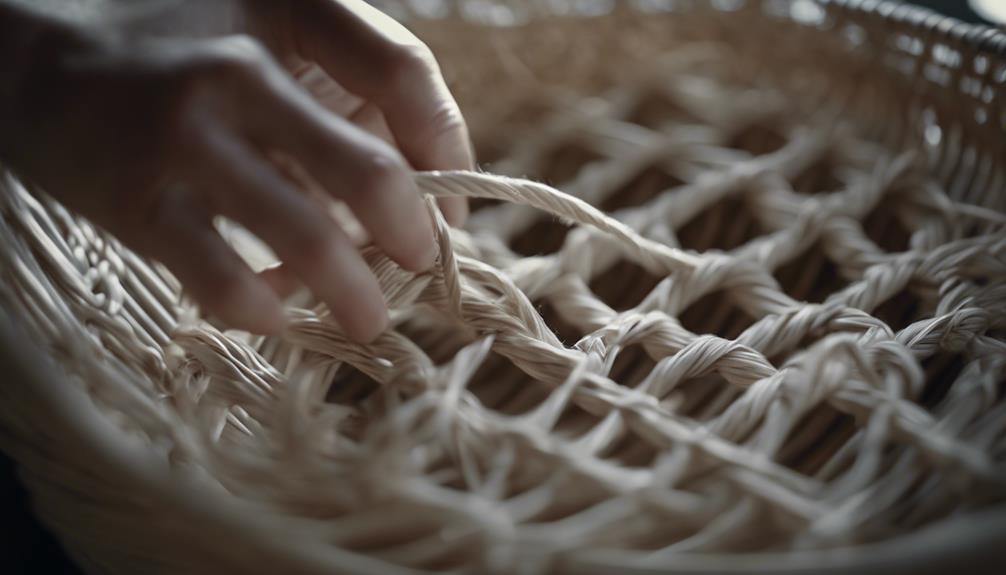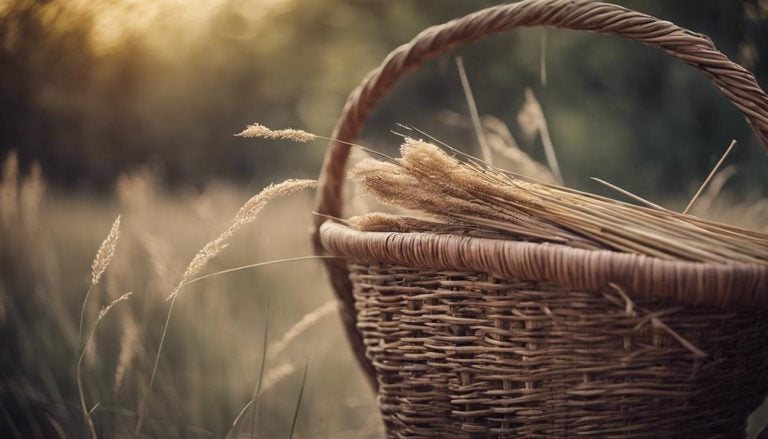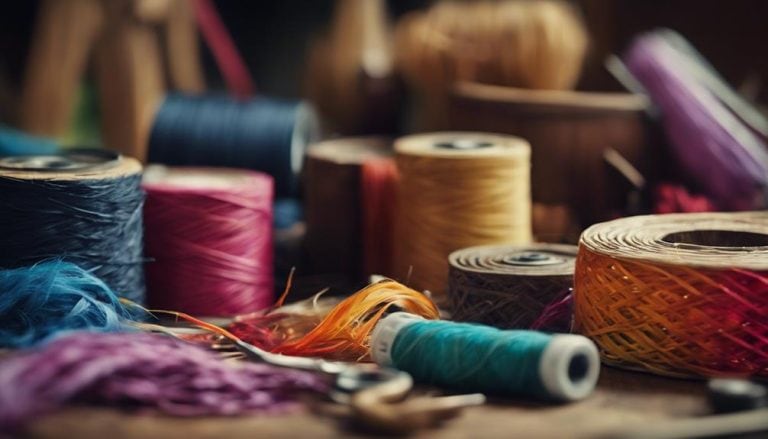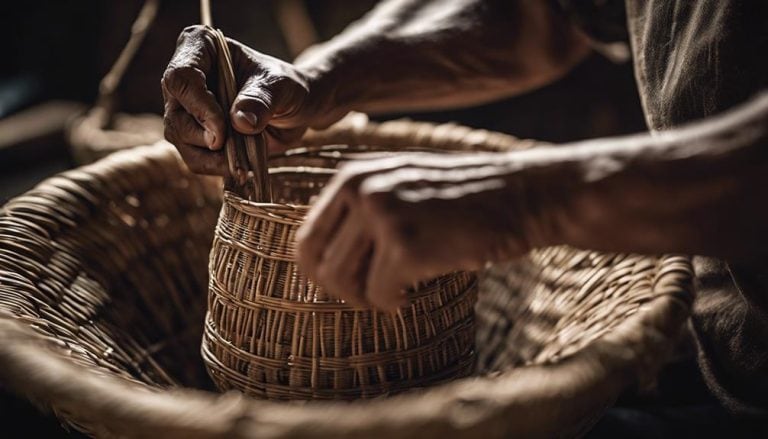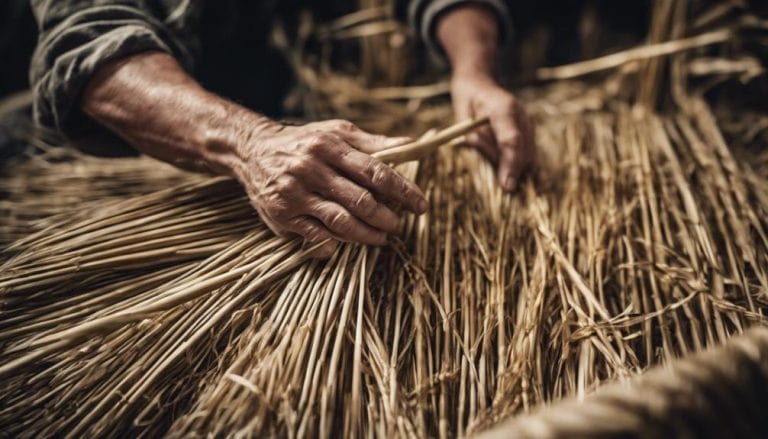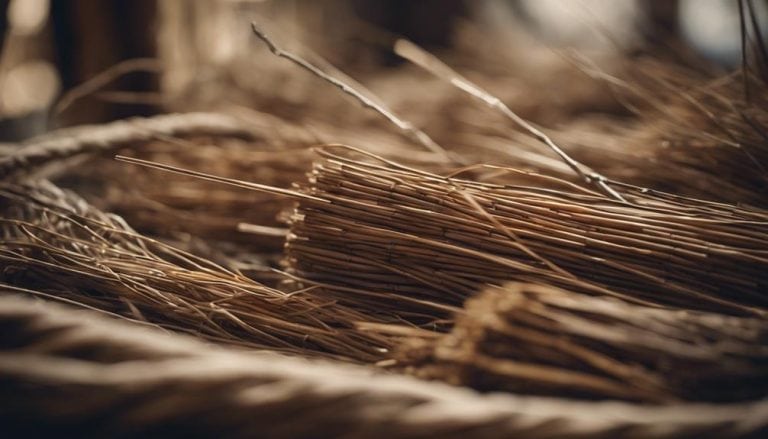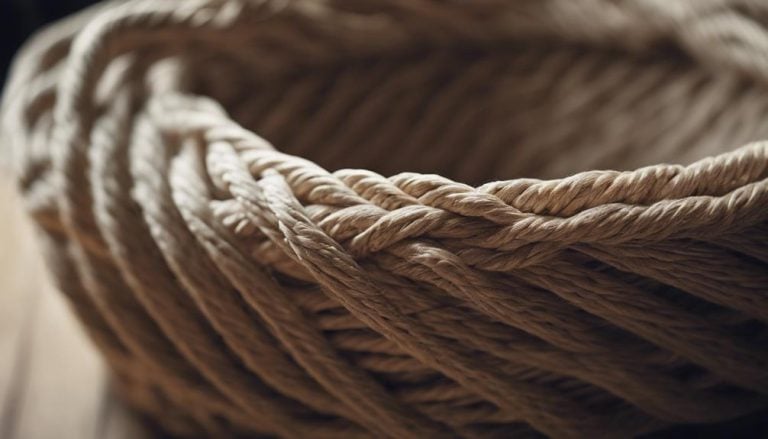Danish Cord Basket Weaving Techniques
Having recently completed my first Danish cord basket weaving project, I was amazed by the intricate patterns and durability achieved through this technique. As I navigated the process of weaving and anchoring the cord, I discovered a whole new world of craftsmanship and creativity.
The fusion of tradition and modern design elements in Danish cord weaving techniques makes it a captivating art form with endless possibilities. Whether you’re a novice or a seasoned weaver, exploring the nuances of Danish cord basket weaving is sure to unveil a world of inspiration waiting to be discovered.
Danish cord basket weaving techniques involve weaving cords made from paper or natural fibers to create baskets. These techniques require precision and attention to detail but can result in beautiful and functional baskets.
Key Takeaways
- Danish cord weaving is rooted in Danish history, popular during material scarcity in WWII, and embraced by renowned designers.
- Basic techniques emphasize color, cord anchoring, tension maintenance, and decorative elements for durable and visually appealing baskets.
- Advanced patterns like Choctaw Diagonal Twill, Circle Unbroken by Margot, and Coiled Designs offer creative challenges and innovation.
- Finishing touches include trimming, securing loose ends, applying protective coats, and proper care for longevity and aesthetics.
History of Danish Cord Weaving
Danish cord weaving, originating in mid-century Denmark, became increasingly popular during World War II due to material scarcity. The origins of Danish cord weaving techniques can be traced back to the need for durable yet aesthetically pleasing furniture in a time of limited resources.
As renowned furniture designers like Hans Wegner and Borge Mogensen embraced this method, the evolution of Danish cord-weaving techniques flourished. The intricate hand-weaving process of Danish cord involves creating classic basket weave patterns that are visually appealing and incredibly sturdy.
The evolution of these techniques has led to the development of unique patterns and weaving orientations that distinguish Danish cord weaving from other styles. Additionally, hooks or nails for anchoring the cord on chair frames showcase this art form’s attention to detail and craftsmanship. Danish cord weaving has become synonymous with quality and timeless design through its evolution.
Materials Needed for Basket Weaving
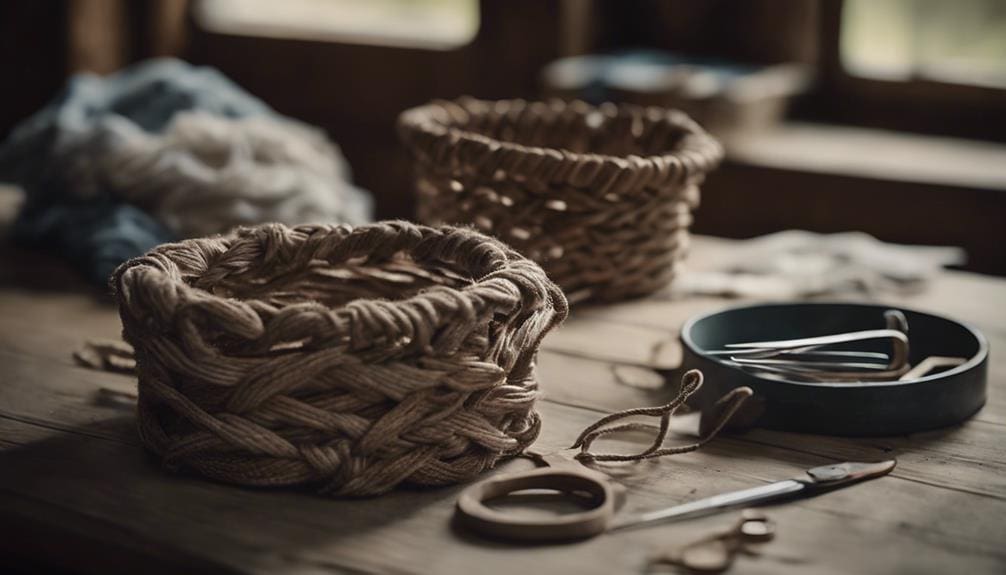
Exploring the essential materials required for basket weaving, the process involves gathering specific items like a Danish cord, a caning needle, and natural waxed Irish linen to ensure the durability and traditional aesthetic of the final product. Danish cord unlaced, typically available in 2 lb. rolls, is fundamental for weaving intricate patterns in Danish cord basketry.
The caning needle is crucial in weaving the Danish cord through the basket structure, allowing for precise and intricate designs. Natural waxed Irish linen secures and finishes the ends of the Danish cord, providing a polished look to the completed basket. When selecting materials for basket weaving, it is essential to consider color options that align with your creative vision.
Drawing inspiration from nature or personal preferences can guide your color choices, creating unique and visually appealing pieces. Additionally, proper maintenance of your weaving tools, such as keeping the caning needle clean and storing materials correctly, ensures longevity and efficiency in your basket weaving endeavors.
Basic Danish Cord Weaving Techniques
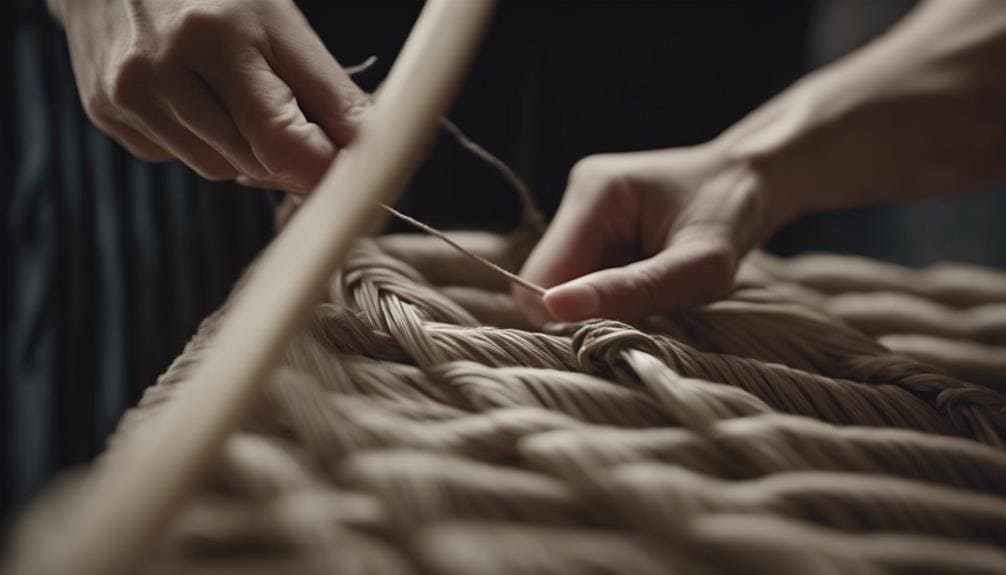
Utilizing traditional weaving methods, I demonstrate the fundamental techniques of Danish cord weaving for creating intricate basket weave patterns commonly found in chair seats and backrests. When starting a project, selecting the right color combinations can significantly impact the aesthetic appeal.
Weaving tools such as hooks or nails on frames are essential for anchoring the cord securely and maintaining the weaving tension throughout the process. Maintaining proper weaving tension is crucial to ensure a consistent and durable weave. Danish cord, known for being tightly twisted and waxed, contributes to the longevity of the final product.
Continuous tightening of the weave as you progress is key to achieving a sturdy and long-lasting chair structure. Additionally, incorporating decorative elements into the weave can further enhance the visual appeal of the finished piece.
Advanced Weaving Patterns and Designs
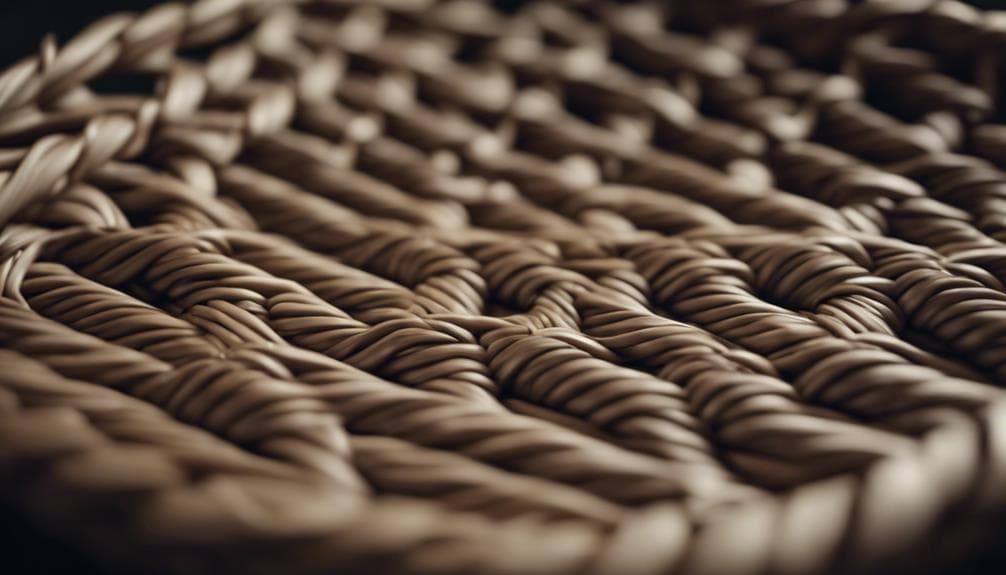
Exemplifying the complexity and artistry of advanced weaving patterns and designs in Danish cord craftsmanship showcases a mastery of intricate techniques and creative expression. Here are some intriguing examples that push the boundaries of traditional Danish cord weaving:
- Choctaw Diagonal Twill: This intricate design challenges experienced weavers with its complex patterns and precise weaving techniques, resulting in a visually captivating piece highlighting skill and creativity.
- Circle Unbroken by Margot: Offering a rewarding yet demanding weaving pattern, this design presents creative challenges that inspire weavers to explore new possibilities and expand their skills in Danish cord craftsmanship.
- Coiled Designs for Gourd Art: Pushing the limits of traditional weaving, this collection introduces innovative techniques that elevate Danish cord weaving to new artistic heights, inviting weavers to experiment with unconventional methods and materials.
- Carol’s Collection Focus: For those seeking to enhance their weaving skills, this collection presents advanced patterns that encourage creativity and exploration, providing a platform for weavers to showcase their artistry through intricate weaves and imaginative designs.
Are the Techniques for Danish Cord Basket Weaving the Same as Those for Rattan Cane?
Yes, Danish cord basket weaving techniques differ from rattan cane. While Danish cord basket weaving involves creating a pattern with continuous cord, rattan cane weaving involves interlacing cane strands. You can find a comprehensive basket weaving tutorial with rattan cane online to learn each technique.
Finishing Touches and Care Tips
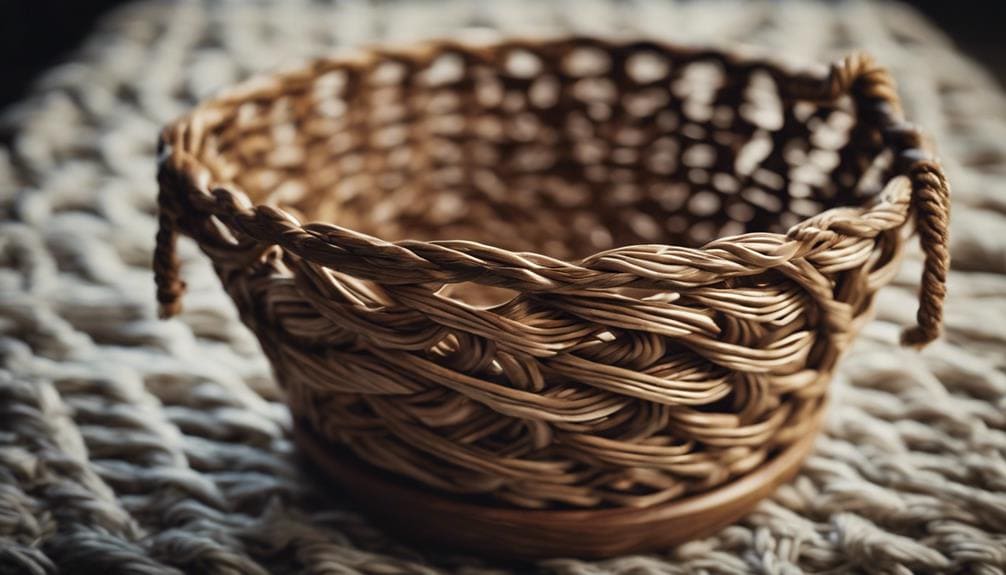
In Danish cord basket weaving, attention to finishing touches and care tips is paramount to preserving the integrity and beauty of these intricately crafted pieces. When it comes to finishing touches, trimming techniques play a crucial role. Trimming excess cords and securing loose ends with knots or a dab of glue ensures a clean and polished final look.
Applying a protective clear varnish or wax coat can enhance the aesthetic appeal and safeguard the Danish cord from wear and tear. Maintenance practices are equally important in prolonging the lifespan of Danish cord baskets. It’s advisable to avoid prolonged exposure to direct sunlight to prevent fading. For cleaning, a gentle wipe with a damp cloth suffices without compromising the integrity of the weave.
Regular inspections, especially at stress points, help identify any potential issues early on. Proper storage in a clean, dry environment when not in use prevents dust accumulation and maintains the basket’s pristine condition. By incorporating these finishing touches and maintenance practices, your Danish cord basket will continue to captivate with its beauty for years.
Frequently Asked Questions
How Do You Weave a Danish Cord?
To weave a Danish cord, I ensure cord tension is consistent for a sturdy piece. I follow a classic basket weaving pattern for structure. Selecting cord color is crucial for aesthetics. Finishing touches like trimming and securing knots complete the process.
What Is the Nail Spacing for Danish Cord Weaving?
Nail spacing sets the stage for my weaving masterpiece, like musicians tuning instruments. Each precise placement controls tension, ensuring a harmonious blend of strength and beauty. It’s the silent conductor of my craft.
What’s the Difference Between Laced and Unlaced Danish Cord?
Laced Danish cord comes pre-woven, while unlaced requires weaving during installation. Unlaced cord offers more customization and creativity with colors, weaves, and tension adjustments. It’s about personalizing your craft, making each piece unique.
How Long Does Danish Cord Last?
Sure thing! Danish cord lasts a remarkably long time. Its durability is impressive, requiring minimal maintenance. The quality and strength of this material ensure that it can withstand years of use without losing its charm or functionality.
Conclusion
In conclusion, Danish cord basket weaving techniques offer a unique and sustainable way of creating beautiful, durable furniture pieces. One example is a set of dining chairs woven with intricate patterns that add a touch of elegance to a room but also showcase the artistry and craftsmanship of Danish cord weaving. These woven creations can stand the test of time with the right materials, techniques, and care.

